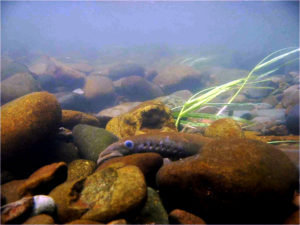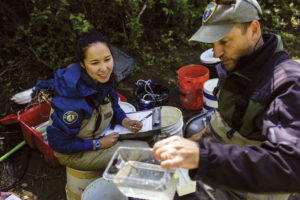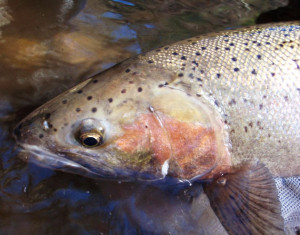In the early 1970s, when the Army Corps of Engineers built a weir across Alameda Creek to stabilize a railroad crossing and the new BART tracks, they also blocked steelhead from swimming to upstream spawning grounds. Given the numerous dams and other diversions built on the 700-square-mile watershed since 1913, you’d think this last insult would have done in the fish for good.
But every fall since 1997, the Alameda Creek Alliance has documented steelhead trying unsuccessfully to get upstream past the weir to spawn. In fall 2004, after a struggle to get state and federal permits, creek alliance volunteers and biologists from the East Bay Regional Park District and Alameda County Flood Control District were allowed to move the legally protected fish above the weir by hand.
The fish’s way will be smoothed further when the San Francisco Public Utilities Commission, which owns 36,800 acres on the watershed, removes the Niles and Sunol dams. This move, says EBRPD fisheries manager Pete Alexander, will get the fish into proven spawning habitat on Stonybrook Creek and one step closer to even better habitat in Sunol Regional Wilderness.
Plans for a fish ladder around the BART weir have been in the works since 1998. “We had been going to the Army Corps for funding,” says the Creek Alliance’s Jeff Miller. “But they just cut all that last year.” Now Miller and others are looking to get funding through a new Army Corps bill. At the same time, more than a dozen local, state, and federal agencies are developing a long-term fisheries restoration plan for the watershed.
In the meantime, will moving a few fish by hand make a difference? There’s a danger that such a small number of fish could create a genetically limited population—something called the “founder effect”—but Alexander thinks it’s worth the risk. “You’re starting to restore the system,” he says, “to get that run reestablished.”
For updates, go to www.alamedacreek.org or www.cemar.org.




